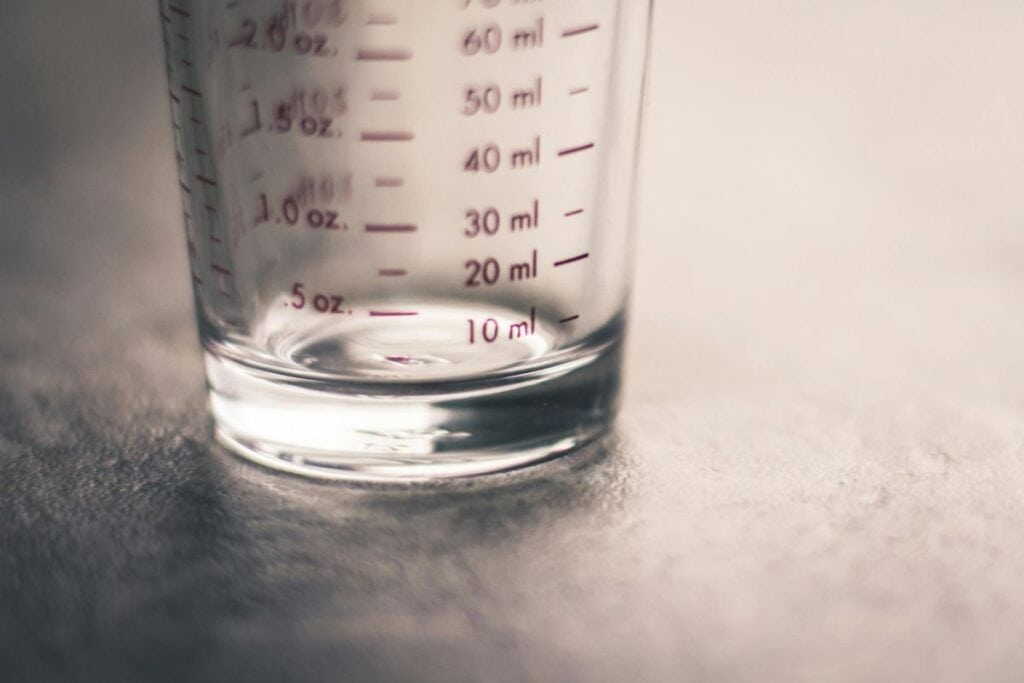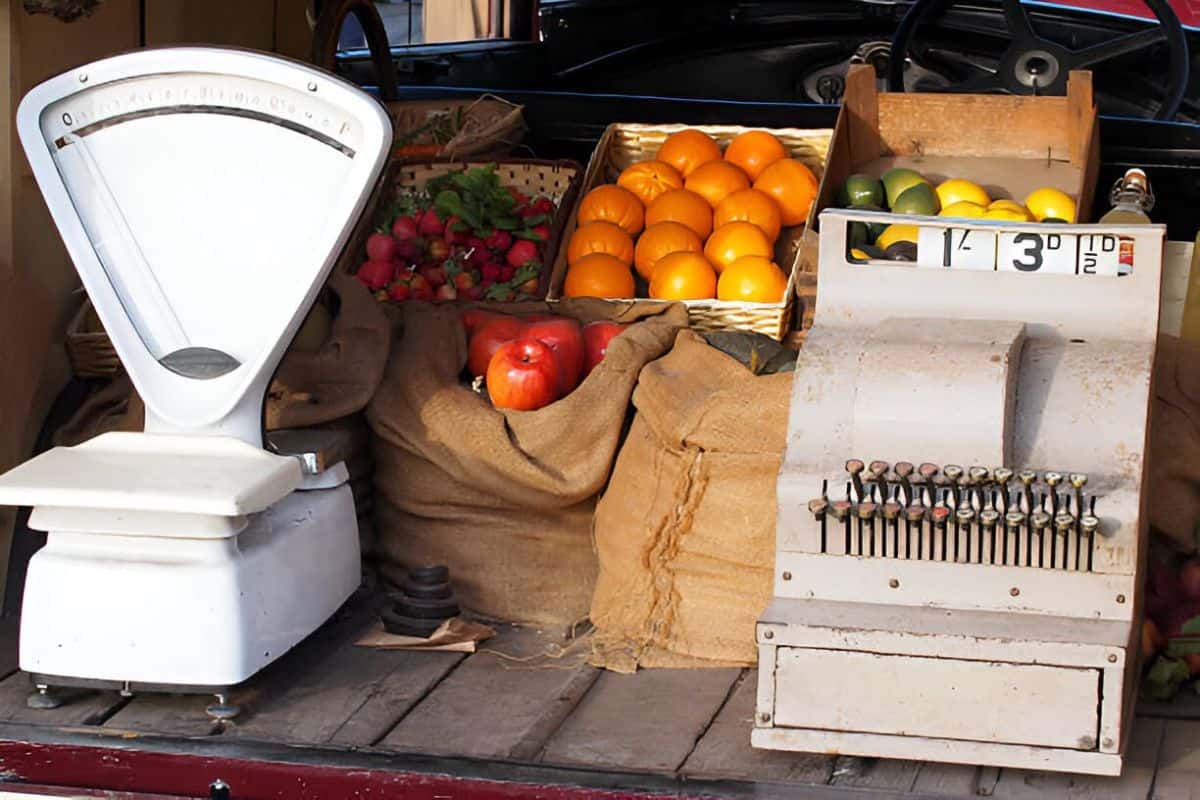Whenever you are perusing the store and the list of ingredients is rife with such things as “ounces,” it’s easy to get confused.
You just need a simple reminder of how weight measurement works.
Weight conversions are all over the place: in the kitchen, in lab projects, in shipping, and just about wherever.
Here is the big, ever-good question: how many ounces is in a pound? The reason is at hand.
The information of this baseline allows you to switch between the two most popular units easily, whether reading a recipe, working out the postage, or trying a science experiment.
Key Takeaways
- Every pound is made up of 16 ounces in the avoirdupois system.
- You can convert pounds to ounces by multiplying the pound weight by 16.
- In reverse, you can convert ounces to pounds by dividing by 16.
- The majority of individuals in the United States tend to use pounds and ounces.
How Many Ounces Make One Pound? Quick Answer

Simply, one pound comprises 16 ounces. This conversion is the fundamental weight conversion in the American lifestyle today.
Standard Avoirdupois System
Think of the avoirdupois system as the most common “everyday weight system” that we use when it comes to most measurements.
It is the system of weights and measures, which has an official weight of a pound being 16 ounces.


Never Worry About AI Detecting Your Texts Again. Undetectable AI Can Help You:
- Make your AI assisted writing appear human-like.
- Bypass all major AI detection tools with just one click.
- Use AI safely and confidently in school and work.
You will find this weight system any time you weigh things to make a grocery list, estimate shipping charges, or walk on a residential scale.
The way we understand that 12 inches make a foot, so does 16 ounces make a pound in the avoirdupois system.
That uniformity translates to the fact that as long as you remain with this set-up, then your calculations will be predictable and reliable across different contexts.
Notation: 1 lb = 16 oz
We are sure that you will learn this conversion better with the help of examples to solidify their meaning.
This is a mathematical equation that can work both ways. To change pounds to ounces, multiply by 16. In order to change ounces into pounds, divide the ounces by 16.
Assume a recipe requires 2 pounds of flour, and you are baking.
To get the measurement in ounces, just multiply 2 by 16 = 32, so 32 would be the number of ounces you require.
On the other hand, in case you have 48 ounces of sugar, divide it by 16. This results in 3 pounds specifically.
This ratio is universal regardless of what you might be gauging, be it produce at the grocery store or packages at the post office.
Origin of the Measurement Standard
The name itself (avoirdupois) is an Old French word that translates to mean “goods of weight,” and is suggestive of its commercial currency.
The system was developed in the late Middle Ages to standardize the weight of goods traded in England.
It later came to be used in the American colonies because standardized measures were needed to conduct business by the merchants.
The 16 ounces was not arrived at arbitrarily; it evolved from practical considerations through tenures of commercial applications.
The weight system offered to traders in the Middle Ages had to be easy to divide by half, quarter, or eighth.
This was beautifully achieved through the number 16 since 16 is divisible by 8, 4, 2, and 1.
This system took on fast as it became highly convenient for the merchants who had to weigh their goods fast and accurately, without complicated calculations.
It also provided people with the concept of physical weights, which they were able to hold and see.
A pound gave a large yet convenient measure of goods, and an ounce was used to give accuracy for small quantities.
Understanding the Units
When you get an understanding of what pounds and ounces mean, it is so much easier to understand the mathematics behind it.
What Is a Pound?
A pound is a substantial measurement of weight that you come across every day in your daily life.
In order to develop your intuitive sense of this weight, begin by holding something weighing one pound.
Generally, a standard loaf of bread, a box of pasta, and four sticks of butter are all about 1 pound.
It is a physical reference point that your brain needs to develop a proper feeling of what exactly one pound is like.
More so, the pound is our medium-sized measure of the avoirdupois system. It is big enough to measure significant amounts of food, tiny packages, and household objects.
However, it’s not too big to turn into a cumbersome monster when it comes to making calculations regularly.
Once you go to the grocery store, you realize there are a lot of things there priced and sold by the pound. This includes,
- Ground beef,
- Apples
- Potatoes, and
- Countless other products use the pound as their standard unit.
This widespread adoption represents an amount that people can easily visualize, handle, and purchase in typical quantities.
What Is an Ounce?
An ounce is our precise tool in the world of weights.
When you have a measurement that a pound can’t express, you can turn to the ounce instead to give you an accurate measurement.
Objects that usually fall in the range of one to three ounces can be categorized as a slice of cheese, nuts, or a small candy bar.
The ounce measurement works best when sharing in situations requiring careful measurement and portion control.
Bakers use ounces in measuring spices, extracts, and other ingredients whose accuracy will determine the success of the end product.
In the absence of ounces, you would find it hard to represent small weights in simple terms.
This would be inconvenient and rather awkward in everyday application.
Think of it like trying to find out how many seconds we have in a day, when we could conveniently use minutes.
Rather than using fractions, ounces are comfortable and easy to deal with since there is a fit typical serving sizes and daily portions.
Conversion Formula and How to Use It

After getting to know what pounds and ounces are, it is time to learn how to use them to make conversions a breeze for you.
Multiply Pounds × 16 to Get Ounces.
As it has been said, the formula to convert pounds into ounces is:
- Pounds × 16 = Ounces
This method of multiplication is effective since you are saying: “How many ounces is in a pound that I have?”
One pound contains 16 ounces, and when you have 3 pounds, you have three groups, each of 16 ounces, which is 48 ounces (3 x 16 = 48).
This is how you can use this formula step by step:
- Find the number of pounds to convert
- Multiply that figure by 16
- The result provides the equivalent of ounces
- It is important to note that ounces must be higher than pounds.
Example Calculations (1, 2.5, 5 lb)
Let’s work through practical examples that demonstrate the formula in action:
- Converting 1 Pound:
- Formula: 1 × 16 = 16
- Result: 1 pound = 16 ounces
- Converting 2.5 Pounds:
- Formula: 2.5 × 16 = 40
- You can break it down as (2 × 16) + (0.5 × 16) = 32 + 8 = 40
- Result: 2.5 pounds = 40 ounces
- Converting 5 Pounds:
- Formula: 5 × 16 = 80
- Result: 5 pounds = 80 ounces
Additional Examples for Practice:
- 0.5 pounds: 0.5 × 16 = 8 ounces
- 3 pounds: 3 × 16 = 48 ounces
- 4.25 pounds: 4.25 × 16 = 68 ounces
- 10 pounds: 10 × 16 = 160 ounces
Reverse Conversion (Ounces to Pounds)
When converting back to pounds, you have to divide rather than multiply. This formula is just the opposite of the original.
Ounces ÷ 16 = Pounds
This method of division answers the question: “How many complete groups of 16 ounces do I have?” The solution informs you of the number of pounds that you are handling
The step-by-step calculation goes like this:
- Find the number of ounces that you wish to convert
- Take that number and divide by 16
- The outcome provides you with the conversion to pounds
- Note that the outcome in pounds ought to be less than ounces.
To perform multi-step conversions between pounds and ounces without error, use our Ask AI to guide you through the conversion steps.
It’ll convert it and show you the conversion calculation step-by-step.

This comes in handy when converting mixed measurements, computing recipe changes, or figuring out specific portions to be used in cooking and baking.
Pound to Ounce Conversion Chart
It’s best that you have a comprehensive reference chart that transforms weight conversions from mathematical exercises into quick lookups.
This chart will be your conversion compass so that whenever you encounter an unfamiliar weight measurement, you can instantly find your bearings and get to the answer you need.
Table: 0.25 to 20 Pounds in Ounces
This carefully constructed table covers the full range of measurements you’ll encounter in cooking, shipping, and everyday situations.
Each entry represents a commonly used weight increment, ensuring you’ll rarely need to interpolate between values.
| Pounds | Ounces | Pounds | Ounces | Pounds | Ounces |
| 0.25 | 4 | 7 | 112 | 14 | 224 |
| 0.5 | 8 | 7.5 | 120 | 14.5 | 232 |
| 0.75 | 12 | 8 | 128 | 15 | 240 |
| 1 | 16 | 8.5 | 136 | 15.5 | 248 |
| 1.5 | 24 | 9 | 144 | 16 | 256 |
| 1.75 | 28 | 9.5 | 152 | 16.5 | 264 |
| 2 | 32 | 10 | 160 | 17 | 272 |
| 2.25 | 36 | 10.5 | 168 | 17.5 | 280 |
| 2.5 | 40 | 11 | 176 | 18 | 288 |
| 2.75 | 44 | 12 | 192 | 18.5 | 296 |
| 3 | 48 | 12.5 | 200 | 19 | 304 |
| 3.5 | 56 | 13 | 208 | 19.5 | 312 |
| 4 | 64 | 13.5 | 216 | 20 | 320 |
| 5 | 80 | ||||
| 6 | 96 |
How to Read and Use the Chart
Learning to read this chart effectively requires recognizing the mathematical patterns that make conversions predictable.
Notice how the ounce column increases by 16 for every whole pound increment, reflecting our fundamental conversion ratio.
The fractional pound entries, such as a quarter-pound (0.25, 1.25, 2.25), translate to multiples of 4 ounces. Meanwhile, a half-pound increment ( like 0.5, 1.5, 2.5) becomes multiples of 8 ounces.
When using the chart for practical applications, consider developing location strategies that speed up your searches.
Perhaps you’re actively cooking and your hands are messy, but glancing at a chart proves much faster than stopping to calculate.
Download or Print Option
This reference chart excels in situations where quick accuracy matters more than mathematical practice.
Consider downloading and printing this chart for kitchen and daily use, where pound-to-ounce conversions arise most frequently.
While this printed chart covers the most common conversion needs, you might encounter situations requiring different ranges or more specific increments.
For specialized applications like commercial cooking, scientific measurements, or bulk purchasing, consider using our AI Chat to generate customized conversion tables tailored to your exact requirements.

US vs UK vs Metric Comparison
The situation with weight measurements is interesting because countries reach the same basic necessity in different ways.
Although the 16 ounces per pound is the confident working system of Americans, it is not necessarily followed everywhere.
Pounds and Ounces in the U.S. Customary System
The United States is greatly dependent on the avoirdupois system, in which 1 pound is always 16 ounces.
This system has become so embedded in the lives of Americans that it has become impossible to criticize its reasoning.
Americans grow up with a feel of pounds and ounces as they are used in their birth weight and can be seen in the grocery store as it is put by the pound.
The application of this system is also due to cultural tradition and the huge infrastructure installed around these units.
Differences in Global Weight Standards
The United Kingdom is an interesting mixture of different approaches that confuse visitors in many ways.
Although the UK has officially used metric measures for decades, many Brits still use stones (14 pounds each) to measure body weight.
Nevertheless, they have an official system whereby most commercial uses are done in kilograms and grams.
This forms a generation gap with the older people referring to their weight as 10 stone 5 pounds and young people using kilograms.
The metric system, in which weight relationships are in powers of ten, is used by most of the world.
A kilogram is 1,000 grams, and thus conversions are just a matter of sliding the decimal point. A 2.5-kilogram roast is 2,500 grams and there is no need to multiply by 16.
An American who comes across grams might then have to convert grams to ounces.
Why Metric Is Simpler but Less Common in the U.S.
The beauty of the metric cannot be denied, and that’s why it’s used worldwide.
To convert grams, kilograms, and metric tons, you need simple decimal arithmetic.
The advantage of base-10 relationships is the reason why scientific communities around the world use metric standards, since these relationships do not lead to calculation errors and are faster to perform complicated calculations.
However, America’s resistance to metric conversion stems from practical rather than mathematical considerations.
The embedded infrastructure represents trillions of dollars in equipment, legal frameworks, and cultural knowledge. More importantly, Americans have developed an intuitive understanding of customary units.
This intuitive fluency, built over generations, proves remarkably difficult to replace with abstract metric equivalents.
Don’t miss the chance to explore our AI Detector and Humanizer in the widget below!
Final Thoughts
Learning to convert pounds into ounces will equip you with useful skills in measurement that you can use in everyday situations.
Always keep in mind that 16 ounces make a pound, no matter what you are weighing in ounces to pounds.
Whether determining how many ounces are in a quarter pound for burger patties, confirming how many ounces are in a pound for recipe scaling, or calculating how many ounces in a pound of gold for precious metal investments.
With Undetectable AI’s AI Chat and Ask AI tools, you can get instant, accurate answers to measurement questions and practical guidance for real-world scenarios.
Master these conversions today with the help of Undetectable AI and make everyday calculations effortless.
